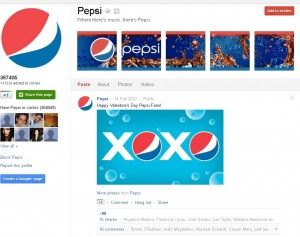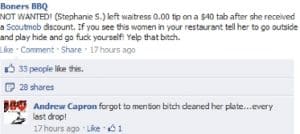Switch on the TV or open the paper and you’re likely to be met with an advert demanding that you ‘like’ a brand on Facebook, but why should anyone want to do that? Okay, so you might need to weather-proof your garden fence, but are you really going to bother becoming a fan a major rivet manufacturer?
The truth is, almost any major brand can amass a social media following, but that doesn’t necessarily mean that the brand knows what to do with it. Many seem solely concerned with getting more fans, rather than satisfying the ones that they’ve already got. For a brand to be truly social, those behind it need to stay faithful to the pillars of social media and place the fan at the heart of their efforts, rather than obsess about pushing the brand message to the detriment of fan experience.
Social brands know why they’re being social. People go to social media to interact with others, but for a brand, having a conversation isn’t, in itself, a result. That conversation needs to achieve something. It might provide an enhanced level of customer service, build brand awareness, create brand advocates to build loyalty, and so ultimately increase sales. Brands need clear goals for social engagement.
Social brands show personality. If you want to be corporate and remote social is probably not for you. That’s not to say that a brand cannot use social media to promote its product. Of course, it’s the brands social space and it can use it any way it likes! But unless the brand makes the effort to make the promotional content interesting, funny or thought-provoking people are just going to tune the content out and will eventually stop visiting the page.
Pepsi uses Google+ for a mixture of engagement and simple promotional posts, but it does so in a slightly silly, creative way. For example, at the moment the brand is encouraging people to upload pictures of their can of Pepsi in front of their local landmarks.
On Twitter, accounts such as @comcastcares use a photo of the individual tweeting for the brand, rather than an impersonal logo avatar. This is especially useful when dealing with customer service issues as people find it easier to relate to a human presence than they do a faceless corporate account. Some brands chose to create brand personas and run the account via a completely made up person created from researching their target audience – but this method goes against the values and transparency that social media promotes.
It’s possible to have a personable Twitter account that uses a corporate logo instead, but it helps if that logo is well known and people have an existing attachment to it. These brands are likely to have an established brand personality already, and run their social media accounts accordingly.
Social brands engage. Brands that reply to people that tweet them, or take the time to post a comment on their wall show that they understand what social media is all about. If someone’s bothered to talk to you, talk back. This will go a long way to building loyalty.
Using a social media account to pump out brand news turns your brand into the online equivalent of the party bore – you know, the one that drones on and on about themselves until you’re ready to eat your own arm off in a bid to escape. If anything, a brand’s social media activity should focus more on what the fan or follower has to contribute than pushing products and messaging.
Social brands listen. Almost worse than a brand than refuses to engage at all are brands that say, ‘tell us what you want us to do’ and then ignore the feedback given. It’s not good enough to say you are listening, you have to show it.
A 2011 report showed that 71 per cent of people who tweeted a brand with a complaint received no response from the brand. As Dave Kerpen, author of Likable Social Media, said recently – “A brand not responding on Twitter is like hanging up the phone on customers. With millions watching.” It’s a very public way for a brand to give itself a bad name.
Brands have to demonstrate that they are listening to feedback, and social offers an efficient way to do this. It doesn’t necessarily mean that brands have to back down whenever a group of people run at them with pitchforks, but it does mean that they should be seen to at least acknowledge people’s opinions and to have considered taking action as a result.
Social brands relate to fans. Brands that know how to listen and engage are often great at relating to fans. These brands understand what drives their fans to continue purchasing their products and they know how to drive engagement and maintain a thriving community – by encouraging user generated content and sharing that content with their fans.
EA Games uses the Twitter account @TheSims3 to engage fans by asking them questions about what their sims are getting up to in game and encouraging them to submit pictures around a theme. (That’s not to mention asking for suggestion for Sim themed pick-up lines for Valentine’s Day.)
Social brands are original. Social media thrives on creative and innovative ideas and campaigns. Just because something has proved successful for a competitor or for your brand in the past, doesn’t mean it should be done to death. A brand that knows its fans well knows what they’re likely to find fun.
In summer 2011 mobile phone company Orange encouraged its Twitter followers to tweet their summer plans with the hashtag #thissummer. The brand then gave the tweets the movie voice over treatment and hosted the results on its blog.

Orange already has an association with the movies, with Orange Wednesdays, and so fans already associate the brand with films.
Ultimately, of course, a brand’s social media success will be measured (by the business, at least) by what it achieved against its original goals. Did it improve its customer service? Did it sell more products? Did it hit the right target audience with the right product? Did it listen to positive and negative feedback and adapt its service? But whatever your targets, you’re likely to meet them quicker if you’re creative, engaging and have a bit of fun along the way.








